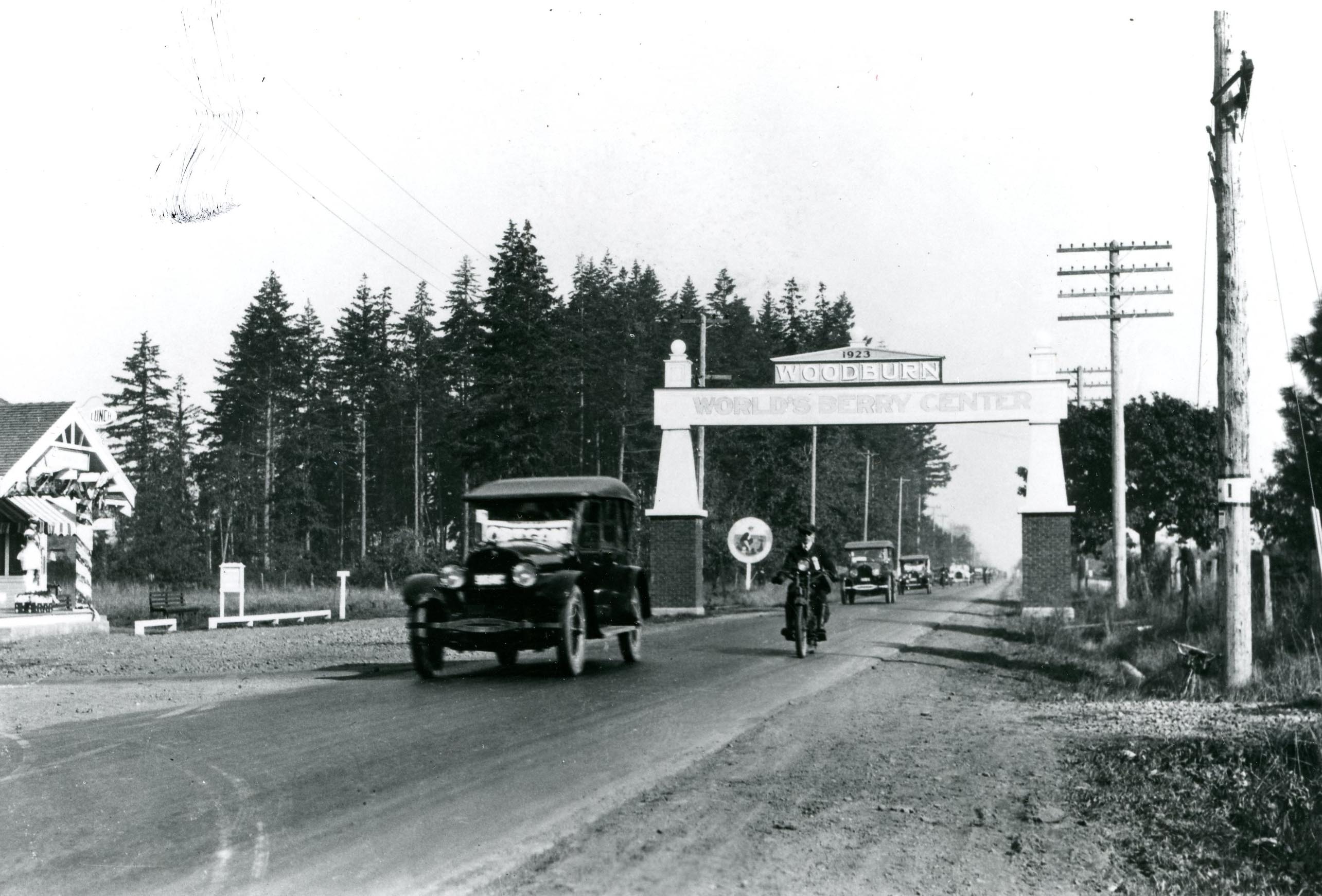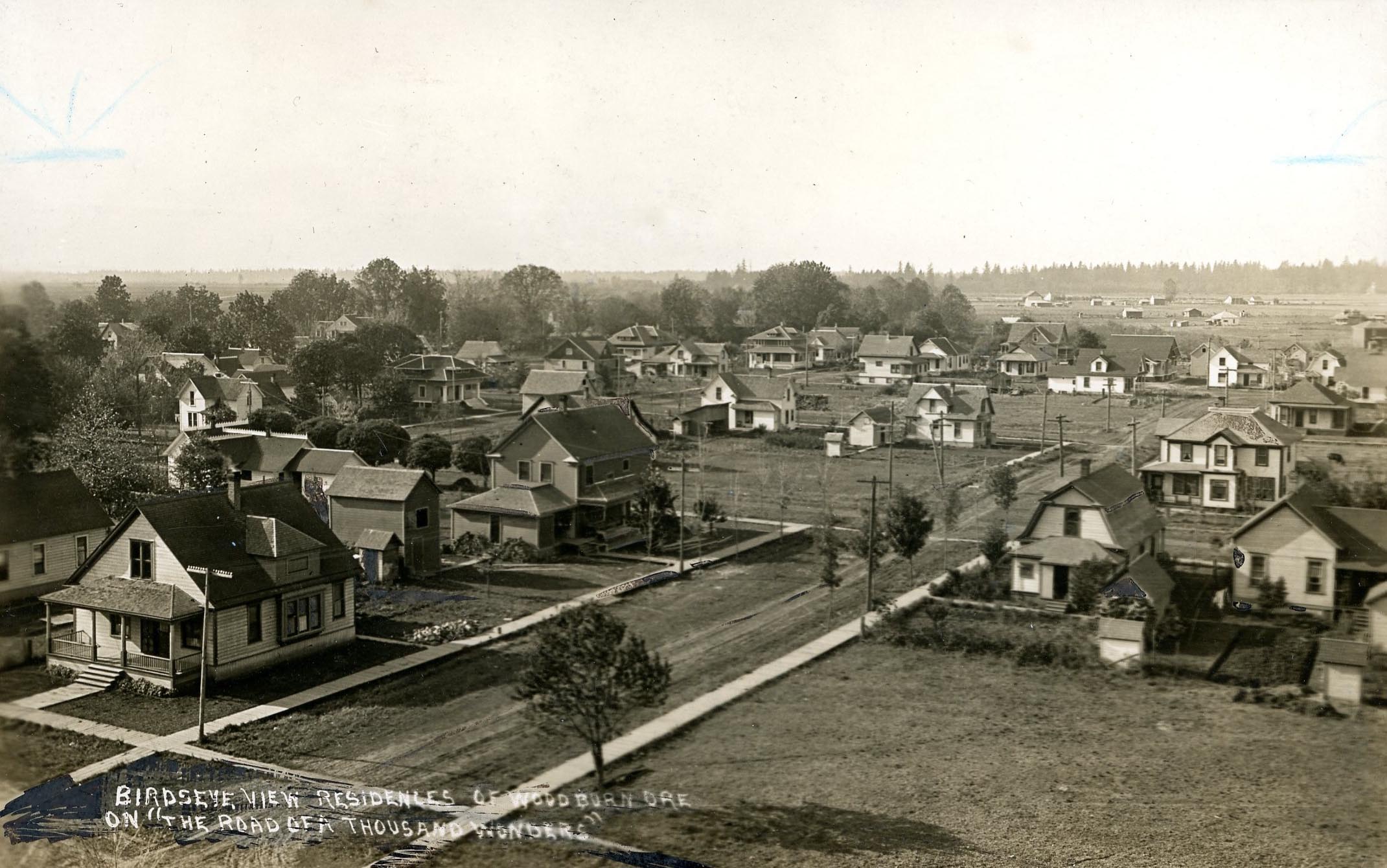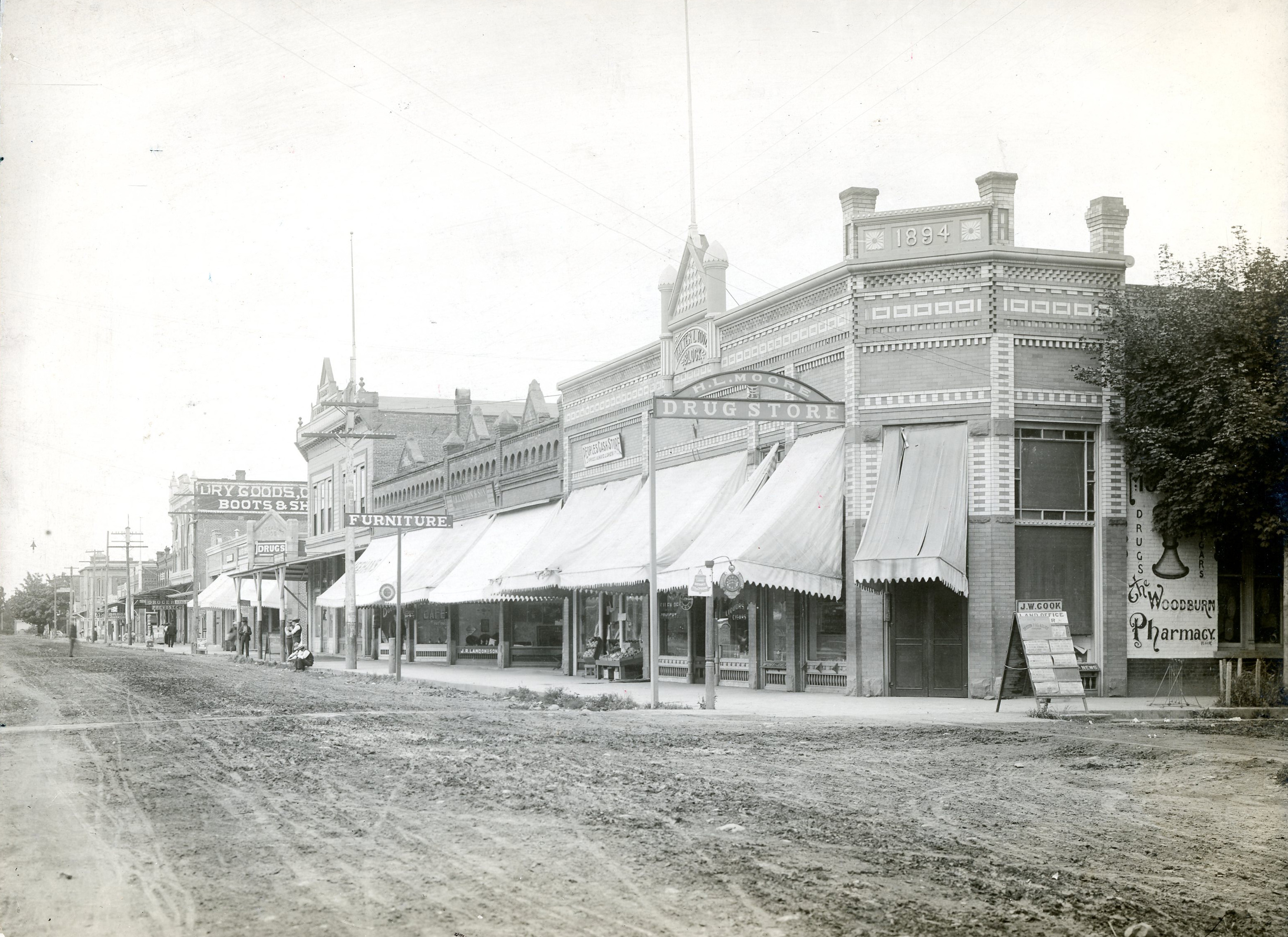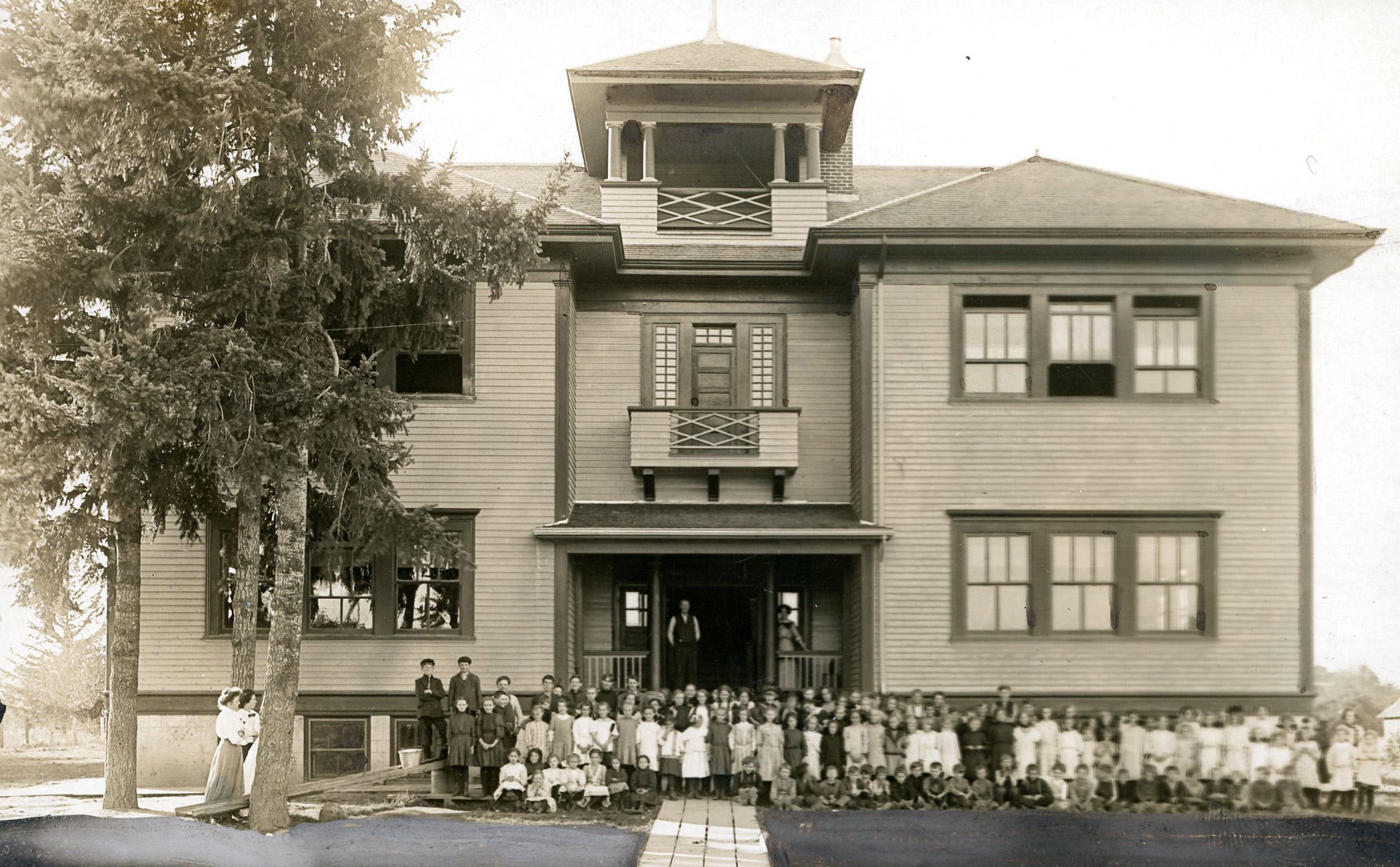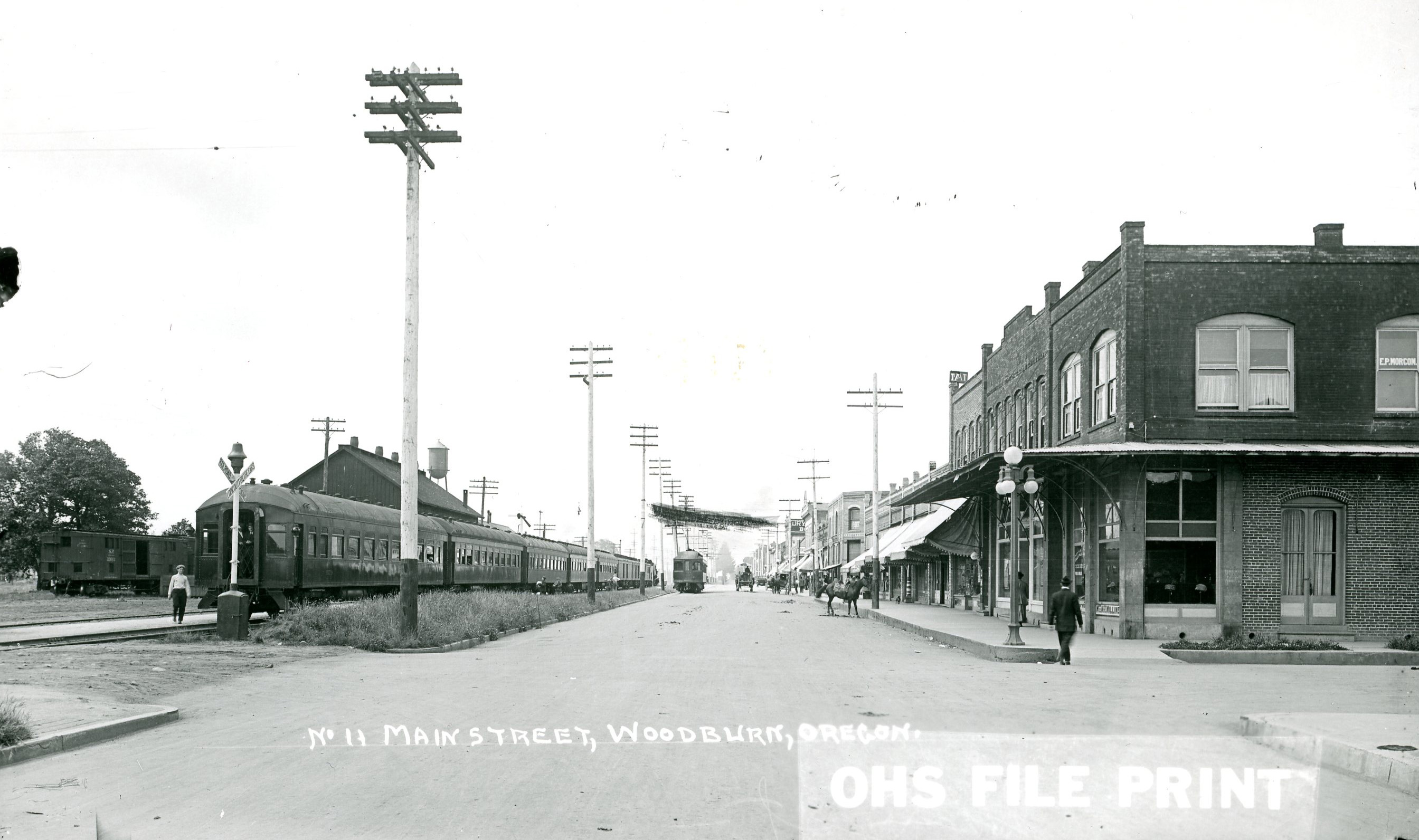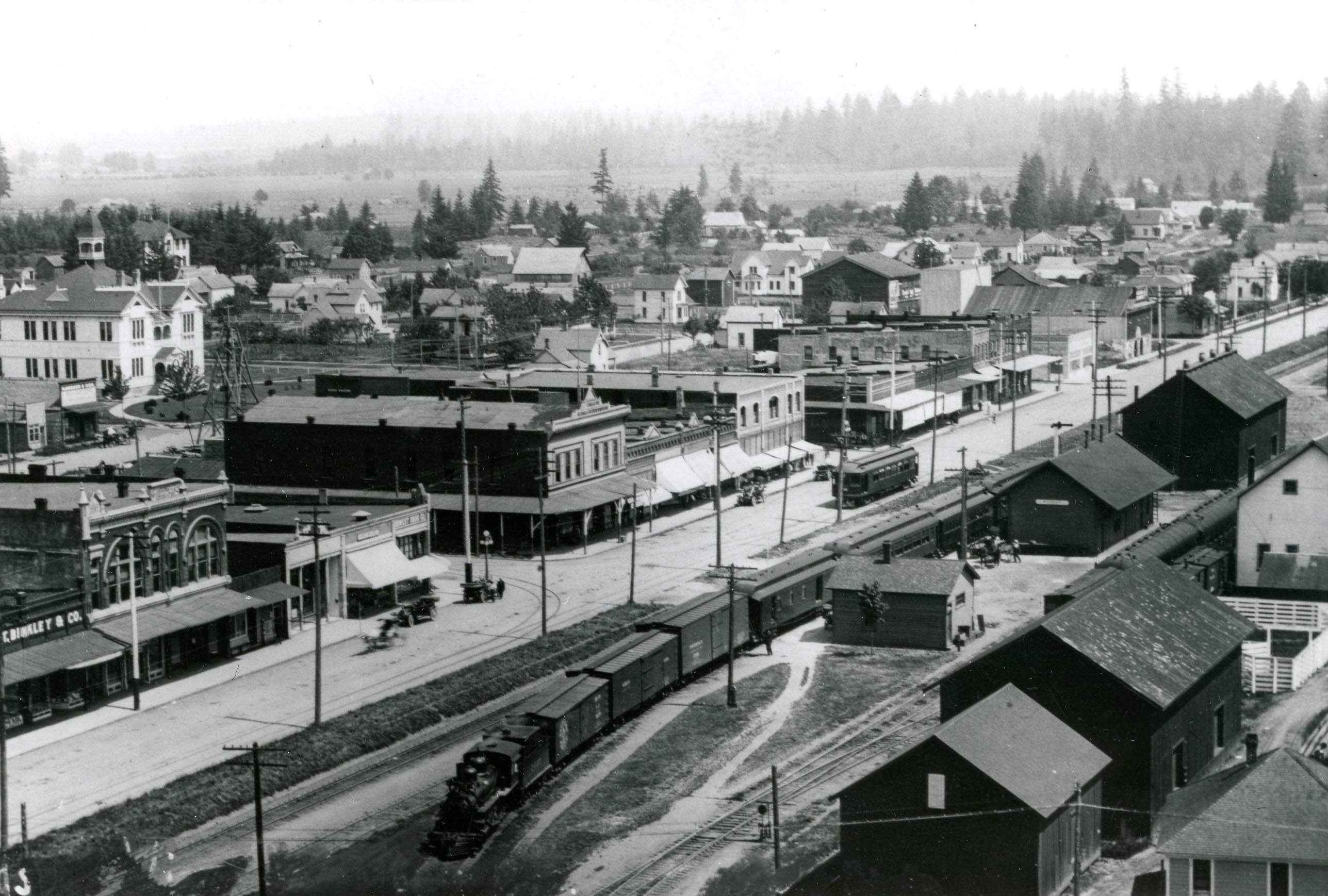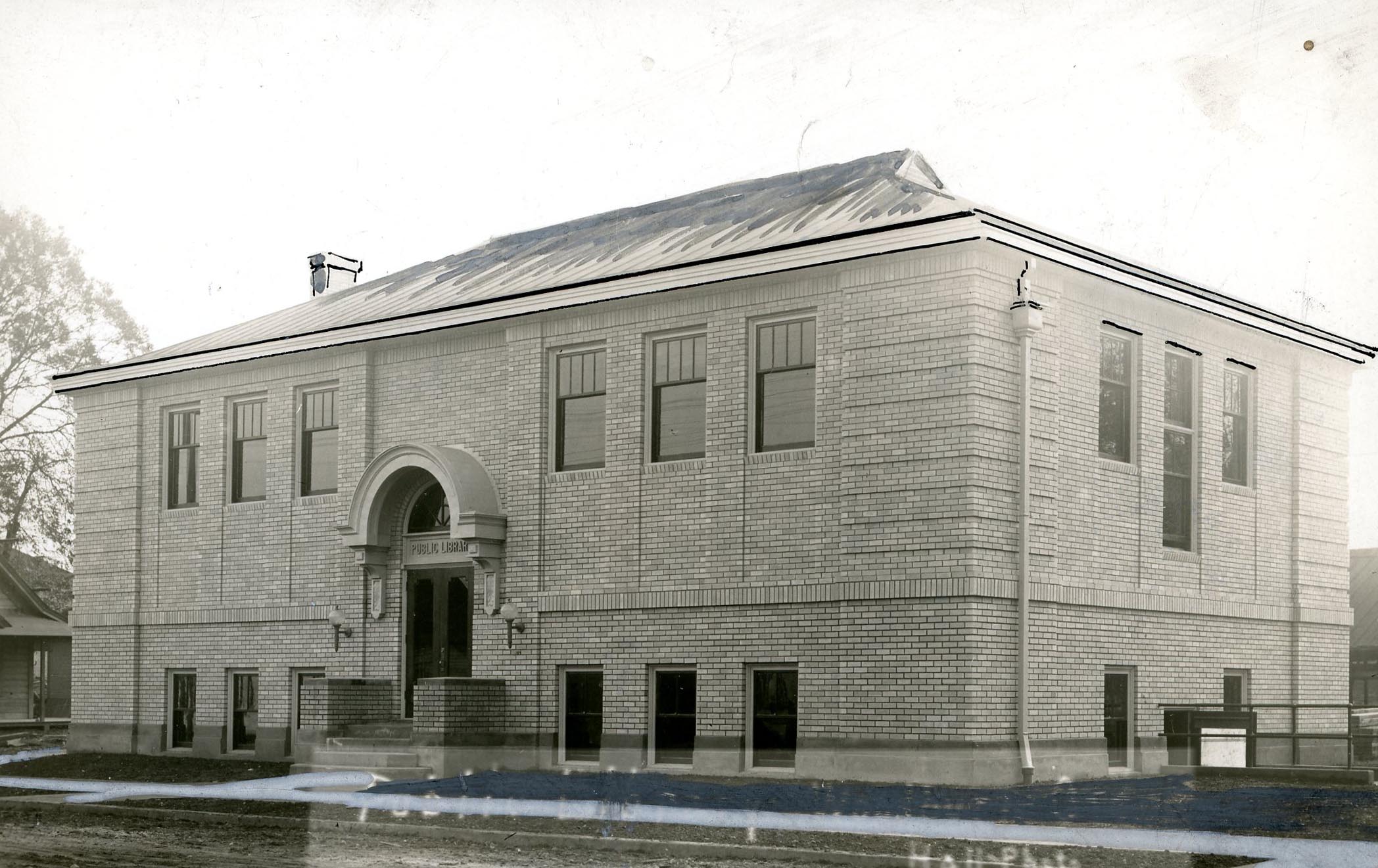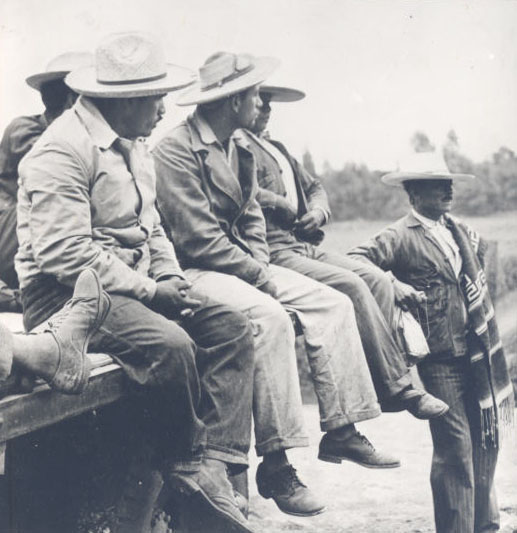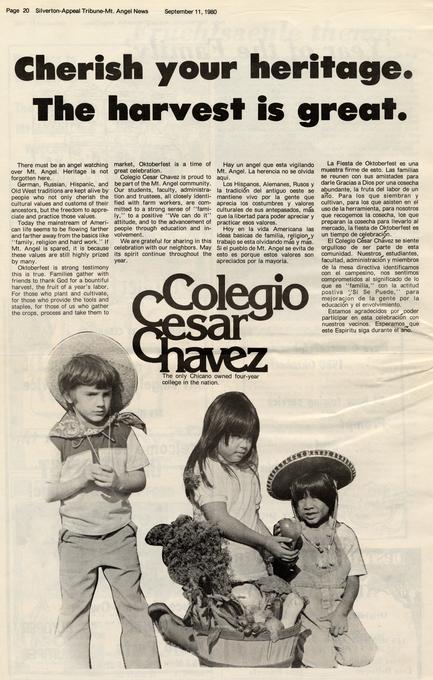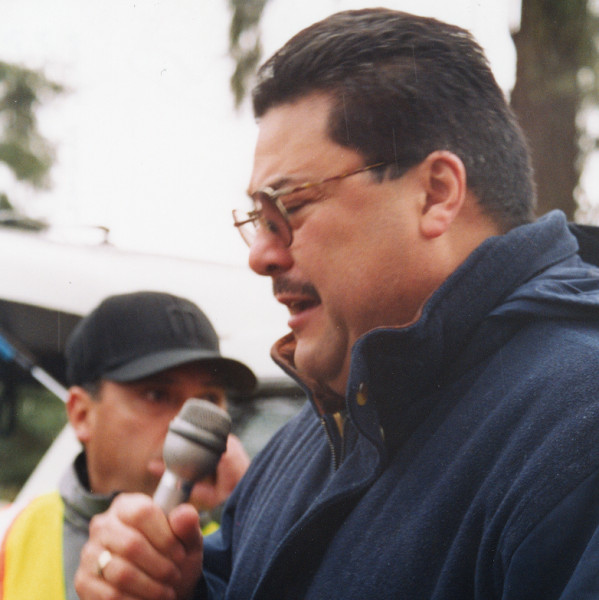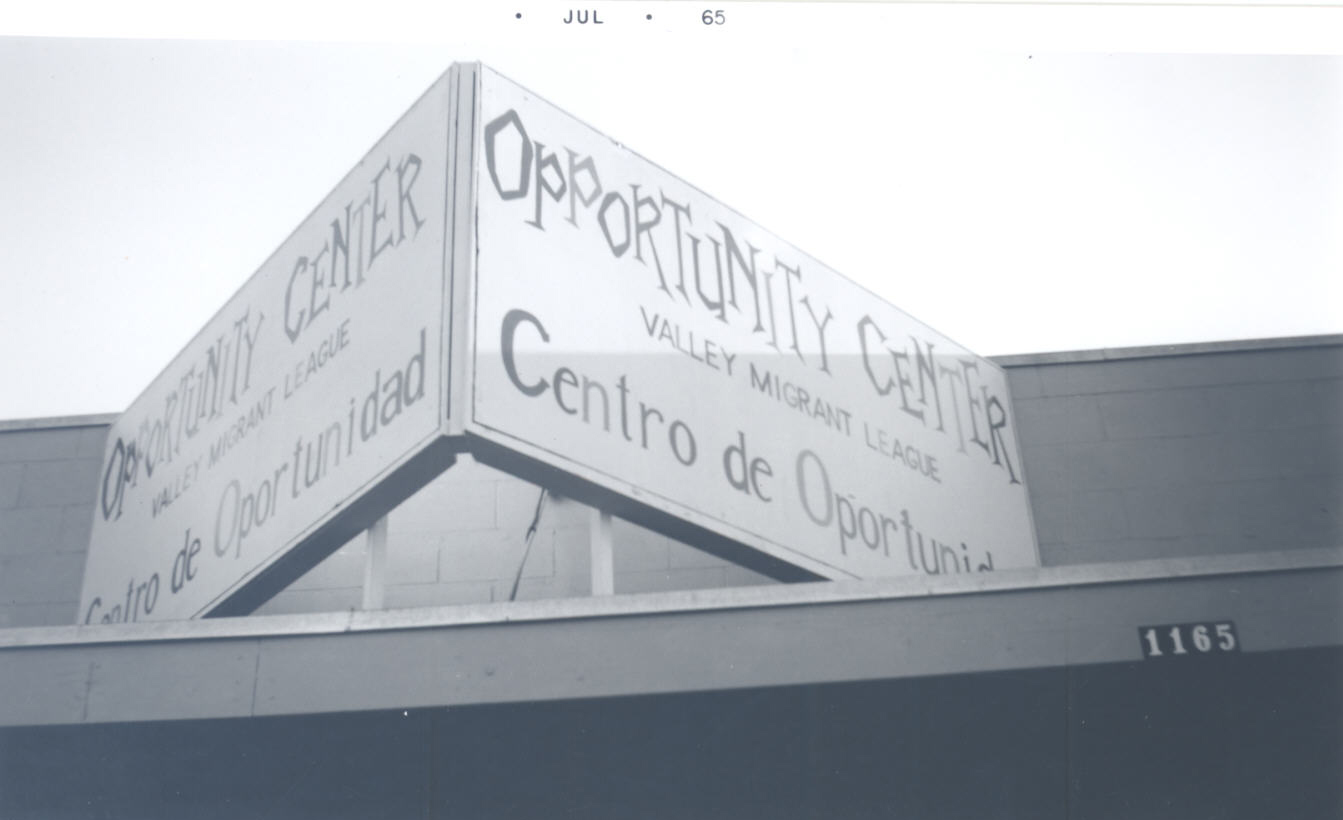Woodburn has always had a dynamic identity. Located in French Prairie in the mid-Willamette Valley, the city had a population of over 27,000 people in 2020. Latinos made up 57 percent of the residents that year, the highest percentage in Oregon cities with a population of over 25,000. The city is known for its cultural and agricultural festivals, including the Fiesta Mexicana and the Wooden Shoe Tulip Farm Fest. It also has one of the largest populations of Old Believers in the world.
The Kalapuya Ahantchuyuk people lived in mid part of the Willamette Valley for thousands of years, hunting and fishing and harvesting the berries, nuts, and roots that grew in the mild climate. They flaked obsidian from the Cascade Range into tools, including what archaeologists call Calapooya Points, distinctive, serrated obsidian arrowheads. By the 1830s, Métis, descendants of French Canadian fur trappers and Indigenous people, had settled in the area, many of them former employees of the Hudson’s Bay Company.
After Congress passed the Donation Land Claim Act in 1850, Eli C. Cooley, Bradford S. Bonney, George Leisure, and Jean B. Ducharme established claims in French Prairie. Nurseryman Jesse Settlemier purchased 214 acres from Ducharme in a foreclosure sale in 1862 and began what later became the Woodburn Nursery Company, which did business throughout the West. In 1871, Settlemier platted four blocks of what became downtown Woodburn and gave land to the Oregon and California Railroad to build tracks through the town, which was then called Halsey. Another town to the south already had that name, however, and the name was changed to Woodburn—reportedly after a slash burn that got out of hand in a nearby woodlot—when it incorporated in 1889. On the corner of Settlemier Avenue and Garfield Street, Jesse and Mary Settlemier built a Queen Anne Victorian-Craftsman-style home in 1891 that was proclaimed the “grandest mansion in Marion County.” The house is listed on the National Register of Historic Places and is open to the public.
Woodburn’s productive soil and mild climate attracted settlers, but by the 1940s Oregon farms faced a critical shortage of workers because of World War II and the incarceration of Japanese Americans. To remedy the problem, the Bracero Program brought more than fifteen thousand Mexican workers to Oregon from 1942 to 1947. The braceros who broke their contracts to stay in Oregon and those who returned as unauthorized immigrants made up part of the early Latino population of Woodburn. Over the next decades, the Latino population grew as migrant families from Texas moved to the area. The city was surrounded by farms that employed Latinos, and a Spanish language radio station, KWRC, was established in 1965. An increasing number of businesses opened that catered to Spanish-speaking customers.
From the 1960s through the 1980s, Latinos organized for more representation and services in Oregon. The Valley Migrant League, established by the federal government in 1965 as part of the War on Poverty, was headquartered in Woodburn. It provided social services, education, and childcare to seasonal agricultural workers in the Willamette Valley and helped establish the Centro de Salubridad health clinic. Colegio César Chávez, the nation’s first four-year accredited Chicano-run college, opened in 1973 in nearby Mount Angel. Collegio graduate Cipriano Ferrel, who had worked with labor leader César Chávez, helped found the Willamette Valley Immigration Project in 1977. He cofounded Pineros y Campesinos Unidos del Noroeste (PCUN), a Woodburn-based farmworker union in 1985.
The Woodburn School District, whose student body is 84 percent nonwhite, has been recognized for the high graduation rates of its Latino students. All elementary students are in dual-language-immersion Spanish schools, where the majority of students participate in the program. The boys soccer team won seven championship titles over eleven years and was the subject of the 2010 The Boys from Little Mexico: A Season Chasing the American Dream, by Steve Wilson.
In the 1950s, a group of Molokans, a Christian sect that had broken away from the Russian Orthodox church centuries earlier, moved to the Woodburn area. They encouraged Russian Orthodox Old Believers, who had refused to participate in the Russian church’s reform in the mid-seventeenth century and had opposed the 1917 Socialist Revolution, to join them. The Old Believers had fled to China, Turkey, Brazil, and Argentina, and thousands immigrated to the Willamette Valley. In 2022, an estimated 10,000 Old Believers lived in Woodburn and the surrounding area. Many of the children attend one of the few K-12 public schools in the U.S. with a Russian language program.
Woodburn is also the home of the MacLaren Youth Correctional Facility, which houses vulnerable youth for education, vocational training, and treatment programs. The Woodburn Company Stores, located on the west side of Interstate 5, opened for outlet shopping in 1999 and in 2022 had over 4.4 million visitors a year. The outlet mall is one of the largest in the western United States. The Wooden Shoe Tulip Festival, established in 1985, attracts approximately 150,000 visitors each year; Fiesta Mexicana, which had its start in 1964 as Fiesta Time, is held each August and is attended by over 20,000 people.
-
![]()
Woodburn, Oregon, c.1925.
Oregon Historical Society Research Library, 66709, photo file 1134A
-
![]()
Woodburn, Oregon.
Oregon Historical Society Research Library, Oregon Journal, photo file 1134A
-
![]()
Main Street, Woodburn, c.1900.
Oregon Historical Society Research Library, 24774, photo file 1134A
-
![]()
Jesse Settlemier, 1868.
Oregon Historical Society Research Library, 014218
-
![]()
Jesse Settlemier House, Woodburn.
Oregon Historical Society Research Library, 49252, photo file 1134A
-
![]()
Early fire brigade in front of City Hall, Woodburn.
Oregon Historical Society Research Library, 56258, photo file 1134A
-
![]()
Early school, Woodburn.
Oregon Historical Society Research Library, Journal, photo file 1134A
-
![]()
Main Street, Woodburn.
Oregon Historical Society Research Library, 18990, photo file 1134A
-
![]()
Armory, Woodburn.
Oregon Historical Society Research Library, photo file 1134A
-
![]()
Old City Hall, Woodburn.
Oregon Historical Society Research Library, Oregonian, 51678, photo file 1134A
-
![]()
Woodburn, Oregon, 1913.
Oregon Historical Society Research Library, Oregon Journal, 51679, photo file 1134A
-
![]()
Woodburn Carnegie library.
Oregon Historical Society Research Library, Oregonian, 51677, photo file 1134A
-
![]()
Woodburn, Oregon.
Oregon Historical Society Research Library, Oregon Journal, 49543, photo file 1134A
-
![]()
Woodburn High School.
Oregon Historical Society Research Library, 18979, photo file 1134A
-
![]()
Wheat fields near Woodburn, 1911.
Oregon Historical Society Research Library, 018890.
-
![]()
Woodburn cheerleaders, 1966.
Oregon Historical Society Research Library, OrgLot74_B2F7_003 -
![]()
Maggie Saldana, Elvira Carbajal, and Lydia Padilla, Fiesta Days court, Woodburn, 1966.
Oregon Historical Society Research Library, OrgLot74_1025 -
![]()
Fiesta Days parade, Woodburn, 1966.
Oregon Historical Society Research Library, OrgLot74_0064 -
![]()
Young women, immigrated from Russia, dance at Woodburn Park, 1967.
Oregon Historical Society Research Library, 59552, photo file 1134A
Related Entries
-
![Bracero Program]()
Bracero Program
The Mexican Farm Labor Program, also known as the Bracero Program, was …
-
![Colegio César Chávez]()
Colegio César Chávez
Colegio César Chávez, located in Mt. Angel in the lower Willamette Vall…
-
![French Prairie]()
French Prairie
Located in Oregon's mid-Willamette Valley, French Prairie was resettled…
-
![Jesse Settlemier (1840-1913)]()
Jesse Settlemier (1840-1913)
Jesse Holland Settlemier, one of Oregon's pioneer nurserymen, was born …
-
![Latinos in Oregon]()
Latinos in Oregon
The arrival of Latinos in Oregon began with Spanish explorations in the…
-
![MacLaren Youth Correctional Facility]()
MacLaren Youth Correctional Facility
The MacLaren Youth Correctional Facility in Woodburn is one of five cor…
-
![Pineros y Campesinos Unidos del Noroeste (PCUN)]()
Pineros y Campesinos Unidos del Noroeste (PCUN)
Founded in April 1985, the Pineros y Campesinos Unidos del Noroeste (th…
-
![Valley Migrant League]()
Valley Migrant League
From 1965 until 1974, the Valley Migrant League (VML) helped Oregon mig…
Related Historical Records
Map This on the Oregon History WayFinder
The Oregon History Wayfinder is an interactive map that identifies significant places, people, and events in Oregon history.
Further Reading
"Woodburn--Celebrating Traditions." Salem Heritage Network.
Kissam, Edward, Lynn Stephen, and Anna Garcia. "21st Century Rural Life at the End of the Oregon Trail: Global Migration and Economic Change in Woodburn, Oregon." U.S. Department of Agriculture, October 2006.
"The Braceros" (film). Oregon Experience, Oregon Public Broadcasting, December 18, 2006.
"Hispanic & Latinx History." Travel Portland, February 2, 2022,

